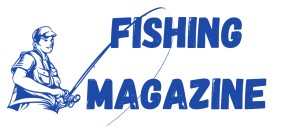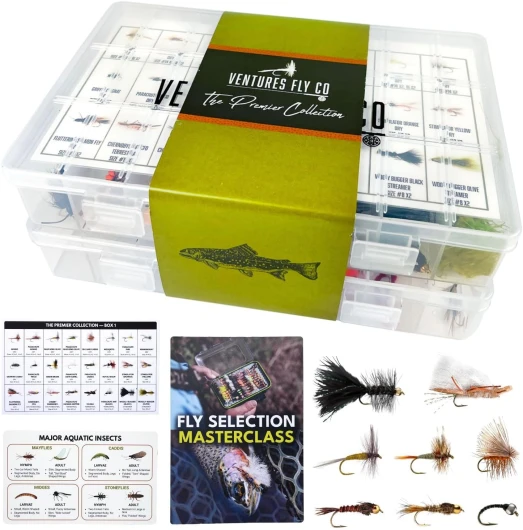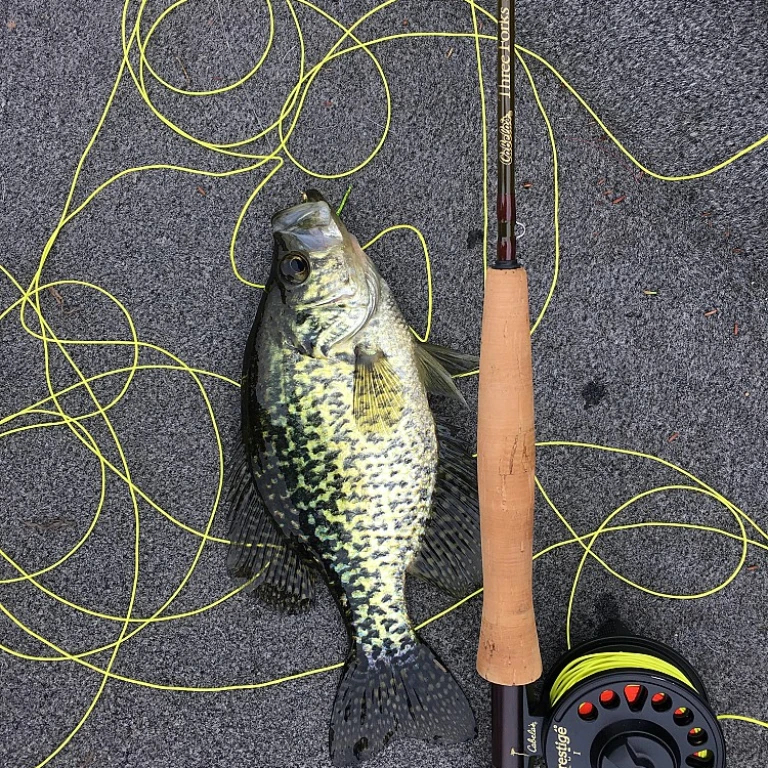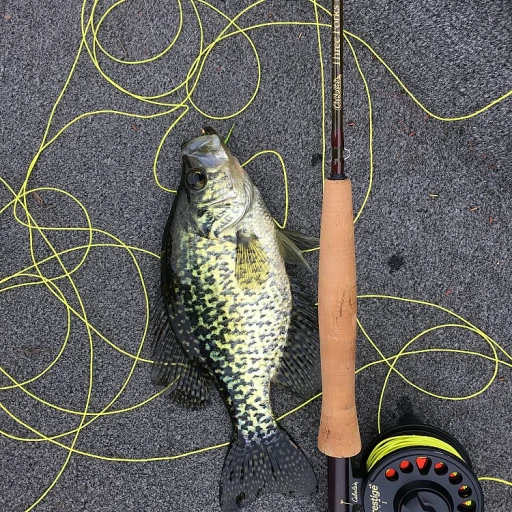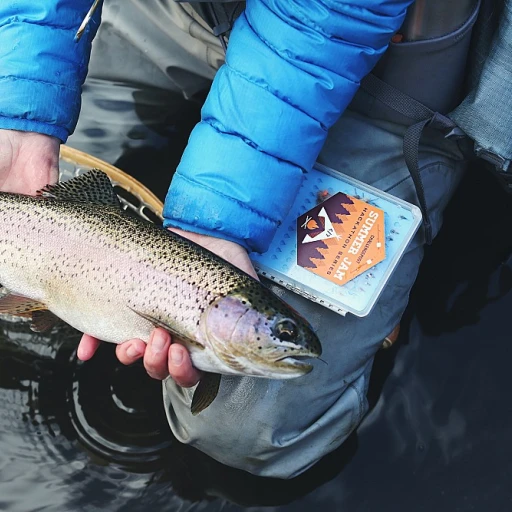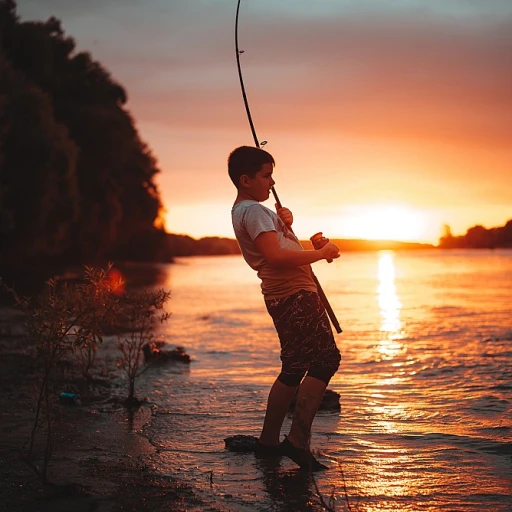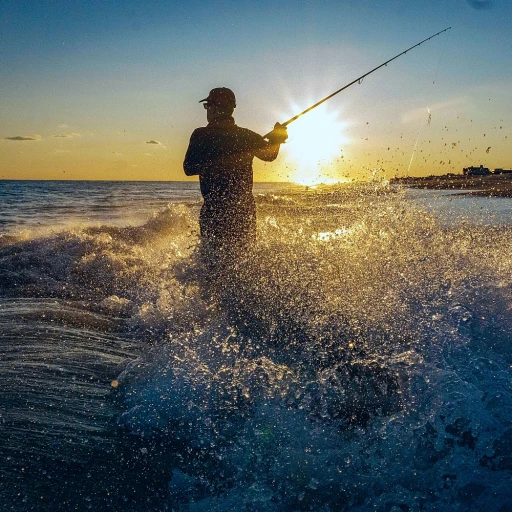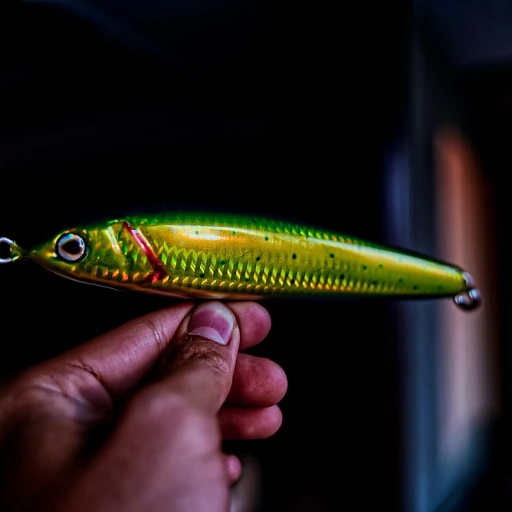
Understanding Brook Trout Behavior
Insights into the Intriguing Nature of Brook Trout
Brook trout, fondly referred to as 'brookies' by many anglers, are a sought-after species in the realm of trout fishing. Known for their quintessential beauty and vibrant colors, these fish possess unique behavioral traits influenced by their habitat. Understanding these behaviors is crucial for any recreational fisher aiming to master the art of fly fishing for brook trout. Brookies are typically found in small streams and cool, clean waters, where the flow often dictates the movements and choices of the fish. Unlike larger trout species such as rainbow trout or brown trout, brook trout usually thrive in less turbulent waters. This attribute makes them somewhat predictable in their feeding habits, which involve keen observation and reaction to their environment. It is widely noted that brook trout are opportunistic feeders. They are drawn to a variety of fly patterns that mimic natural prey, such as dry flies and nymphs. The fly’s size, color, and pattern play an integral role in attracting brookies. For instance, patterns like elk hair caddis and black olive can prove to be quite effective. Moreover, the originality in fly tying can lead to significant advantages, particularly when targeting more seasoned fish. When fishing for these beautiful creatures, it's vital to consider the 'matching the hatch' technique. Matching the hatch involves selecting flies that closely imitate the prevalent aquatic insects in the environment at a given time, possibly opening a window to successful catches. If you find brook trout behavior intriguing, exploring this resource on the top flies might offer additional insights into effective fly patterns. As you deepen your understanding of these behaviors, you will align your strategies better, ensuring more rewarding experiences on your next fishing expedition.Types of Flies for Brook Trout
Exploring Essential Fly Variations
Choosing the right fly is pivotal in fly fishing for brook trout. These fish, affectionately known as brookies, can be quite selective, influenced by both their environment and instinctual behavior. Understanding the types of flies to use is essential for a successful fishing experience.Firstly, dry flies, such as the Elk Hair Caddis and Adams, are popular choices among anglers. These flies mimic adult insects resting on the water surface, a common sight especially during warmer seasons when insects are abundant. Dry flies float atop small streams or still water, tempting brook trout to rise for a strike. Opting for small sizes is often more effective, as brookies have a preference for smaller offerings.
Nymphs and wet flies should not be overlooked, either. These imitate insect larvae or pupae, often more successful when brook trout stay below the surface. Weighted patterns can be particularly useful, allowing flies to sink and drift naturally with the current to attract fish. For more aggressive brook trout, streamer patterns like the Clouser Minnow can unlock an entirely different game. These lures mimic small fish, such as young brown or rainbow trout, appealing to the predator instincts of brookies. The movement and flash of these patterns make them irresistible when fished in deeper waters.
To broaden your knowledge on fly fishing flies, visit our top choices guide.
Additionally, color and material play a crucial role in fly selection. Light flies in shades of white or olive, or versatile black patterns can perform remarkably well. These colors correspond well with many natural insects, which helps brook trout mistake these patterns for the real thing. It's essential to keep a diverse selection in your tackle box to adapt quickly to any condition or message and to keep the fish on their toes.
Fishing for brook trout in various landscapes across the United States can be a rewarding experience, as long as you have the right flies in your arsenal. Investing in quality trout flies opens the window to successful fishing adventures, ensuring that you are well-equipped to tackle these elusive fish, season after season.
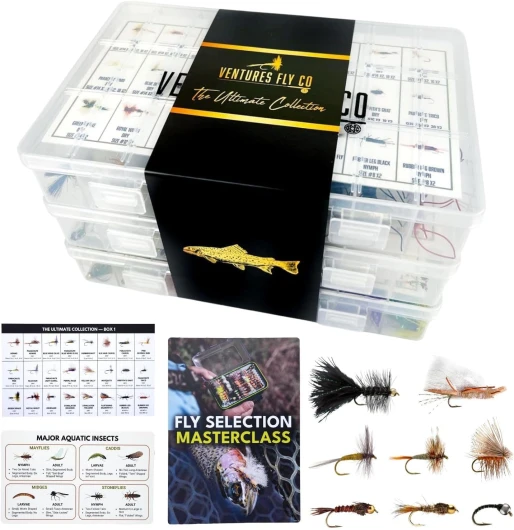
- + 200 flies included
- + Three fly boxes provided
- + Variety of types: Dry, Wet, Nymphs, Streamers, Wooly Buggers, Terrestrials
- + Suitable for Trout and Bass
- + Complete kit for fishing enthusiasts
Seasonal Fly Selection
Adapt Your Flies with the Changing Seasons
Understanding the seasonal variations in brook trout's preferred flies can vastly improve your success on the water. As the climate shifts, these fish adapt their feeding habits, becoming more selective about which patterns they respond to. Recognizing these changes will keep you ahead in the fly fishing game. During the early spring, brookies become more active as the water warms, and small stream insects start to bloom. This is a great time to utilize dry flies that mimic these emerging insects. Classic patterns like the elk hair caddis or small black olives are effective choices as they naturally float on the water's surface, enticing trout to rise. As the season progresses into summer, consider switching to larger fly patterns. This period often coincides with a myriad of insects hatching, providing a smorgasbord for trout. Emulating the larger aquatic insects with flies such as the Clouser Minnow can yield fantastic results. Not only are brook trout attracted to the movement of these patterns, but they are also drawn in by the size, seeing them as nutritious meals. Come fall and the drop in water temperature, brook trout behavior will shift. Often becoming more sluggish, they may prefer smaller flies like nymphs, which can mimic the underwater life that is more prevalent in colder conditions. Remember, understanding the brook trout's behavior and knowing which patterns work best during different seasons will not just enhance your fly fishing experiences but also help in a more sustainable approach to maintaining healthy brook trout populations in the future. By adapting your flies to match the seasonal shifts, you're not only improving your chances of success—you're also respecting the natural rhythms of the aquatic ecosystem. And if you're keen to explore how other seasonal fishing adjustments can enhance your fishing adventures, explore the art of using an inline reel during ice fishing.Matching the Hatch
Synchronizing Your Fly Selection with the Hatch
When it comes to brook trout fishing, one cardinal principle stands out: match the hatch. This approach is crucial in ensuring that the flies you choose are not just theoretical patterns, but real contenders in attracting those elusive brookies.
To successfully match the hatch, it’s essential to consider the aquatic life that naturally thrives in the environment, as well as the time of year. Often, dry flies mimic insects that are present in the water during specific seasons. For example, the Elk Hair Caddis or classic black and olive variations can be effective when these insects make their appearance.
Additionally, size plays a significant role. Brook trout can be selective eaters, particularly in small streams where they are accustomed to a limited variety of prey. Opt for a fly size that closely resembles the insects currently active on the water's surface. Regularly observing the behavior of the fish and the ebb and flow of insect life will make you well equipped to anticipate their preference, which often shifts as quickly as the hatch itself.
Patterns, like a brown trout or rainbow trout flies, often take inspiration from both natural and original fly patterns. It might also be beneficial to include some versatile choices like a Clouser Minnow when the need arises, giving you flexibility across different types of water bodies and conditions.
Fly fishing is an art that opens a window into the world of aquatic life, and understanding these subtle nuances can ultimately lead to a successful day on the water. Keeping your fly selection varied and well thought-out not only builds your confidence but also often increases your strike rate when targeting these beautiful fish. Remember, in the world of fly fishing, presentation, pattern, and patience meld to form the perfect trifecta for the avid angler.
Fly Tying Techniques
Mastering Fly Tying to Entice Brook Trout
Creating your own flies opens a window to a world of customization that can significantly increase your success in brook trout fishing. Fly tying allows anglers to adapt fly patterns to better match the conditions and fish they encounter, particularly in small stream environments where sensitivity to changes is crucial. When crafting trout flies, consider these essential tips:- Size Matters: Brook trout, often referred to as brookies, tend to favor smaller flies. This is particularly true in clear water conditions where a delicate presentation is necessary. Focus on patterns that remain true to their size but do not sacrifice the fly's original appearance.
- Color and Material Selection: Utilize natural materials such as elk hair or other types of soft hackle for dry flies. Black is a reliable color option that mimics many insect species, while black olive might be a less conventional choice but can produce excellent results in the right conditions.
- Fly Patterns: Patterns like the Clouser Minnow, though traditionally effective for species such as bass and rainbow trout, can be adapted for brook trout by downsizing and selecting the right color combinations to mimic the available food sources. Fly patterns must align with the seasonal hatch to ensure the best results.
- Improvisation with Dry Flies: Whether you are using a hair caddis or other dry flies, maintaining buoyancy is key. Pay attention to materials that enhance floatation while ensuring the dry fly does not become waterlogged.
Tips for Successful Brook Trout Fishing
Essential Tips for a Rewarding Brook Trout Experience
Engaging in brook trout fishing is both an art and a science, with many factors influencing success. Here are some essential tips that can significantly enhance your fishing experience:- Pay Attention to Fly Size: Brook trout can be selective and often prefer smaller flies. Using flies that are too big can deter these fish. It is crucial to match the fly size to the typical prey found in the water where you are fishing.
- Be Mindful of Fly Patterns: Being familiar with different fly patterns is essential when targeting brook trout. Classic patterns like the elk hair caddis or small stream black olive are generally effective. However, experimenting with variations of these patterns can lead to rewarding results.
- Embrace Seasonal Changes: As the seasons change, so do the preferences of brook trout. Adjusting your fly selection throughout the year can keep your techniques aligned with their natural feeding habits.
- Blend In with the Environment: Brook trout can be cautious and spooked by disturbances. Wearing clothing that blends well with the natural environment, and taking a stealthy approach will increase your chances of success.
- Practice Precision: Your fly's presentation can make or break your trout fishing experience. Focus on precise casting to place the fly where brookies are likely to be lurking. This includes considering water currents and fish messages conveyed through their feeding behavior.
- Emulate Natural Movements: Observing the natural behavior of fish and their prey lets you adjust your presentation strategies. Understanding these cues can open a window of opportunity for successful brook trout fishing.
